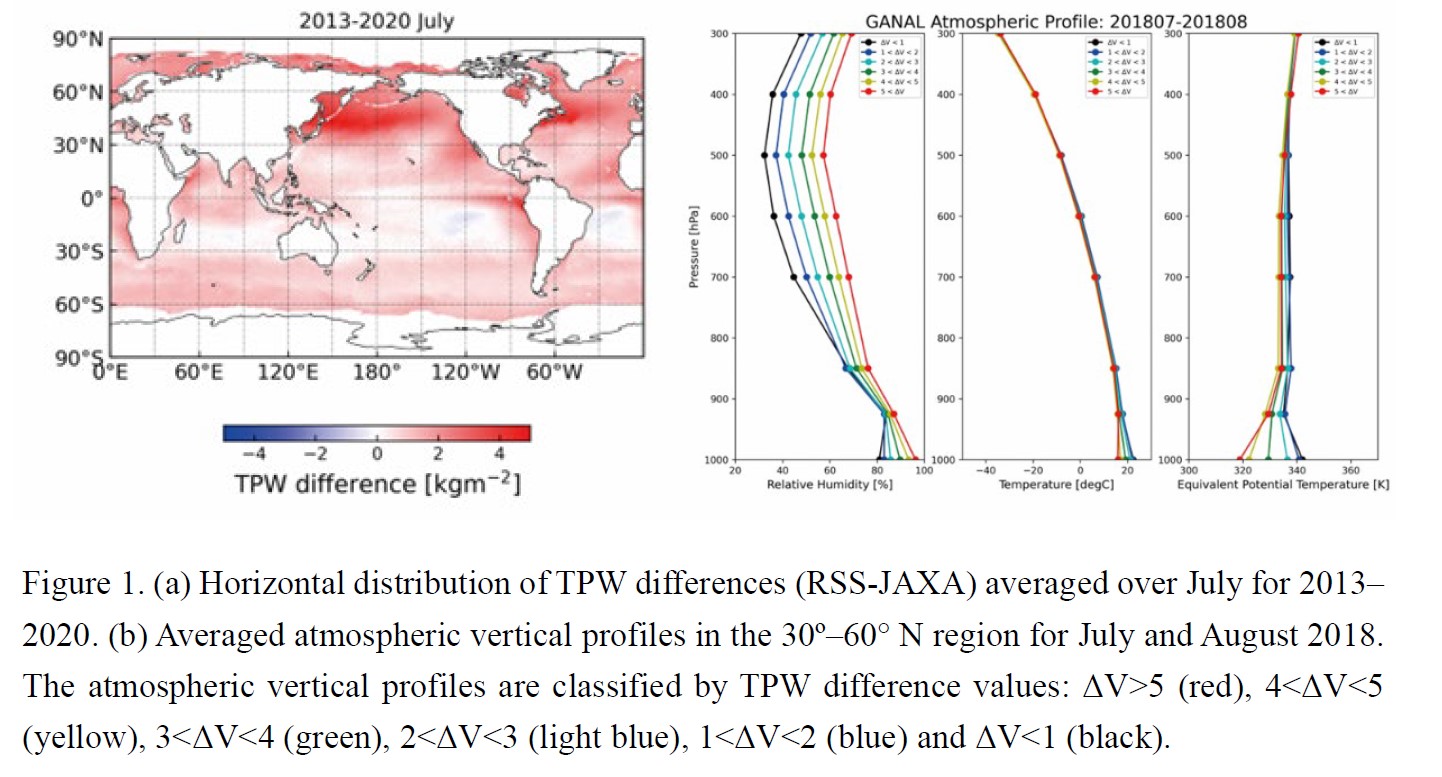Graphical Abstract
Ohara, K., T. Kubota, M. Kachi and M. Kazumori, 2023: Comparison of Long-term Total Precipitable Water Products by the Advanced Microwave Scanning Radiometer 2 (AMSR2). J. Meteor. Soc. Japan, 101.
https://doi.org/10.2151/jmsj.2023-018
Early Online Release
Graphical Abstract
NEW GA
Plain Language Summary: As uncertainties in global water vapor trends associated with global warming are noted by the IPCC reports and previous studies, an accurate and consistent long-term water vapor data sets are needed. This study focused on the total precipitable water (TPW) products of the Advanced Microwave Scanning Radiometer 2 (AMSR2) onboard the Global Change Observation Mission—Water (GCOM-W). We compared two datasets of AMSR2 TPW from July 2012 to December 2020, independently produced by the Japan Aerospace Exploration Agency (JAXA) and Remote Sensing Systems (RSS).

Highlights:
- The significant differences between JAXA and RSS TPW products were found in the northwest Pacific and northwest Atlantic Oceans during the boreal summer season.
- The investigation using JMA Global analysis data (GANAL) and visible and infrared data from the MODIS on the Aqua show that the lower atmosphere had an inversion layer with relative humidity close to 100% and very low altitude clouds (i.e., fog) in the areas where the TPW differences between JAXA and RSS are large.
- The JAXA and RSS TPW products have the opposite sign of biases for radiosonde observations in the northwest Pacific and northwest Atlantic Oceans during the boreal summer season.
- The influence of the inversion layer and fog on the JAXA and RSS TPW algorithms was also investigated using a radiative transfer model.






